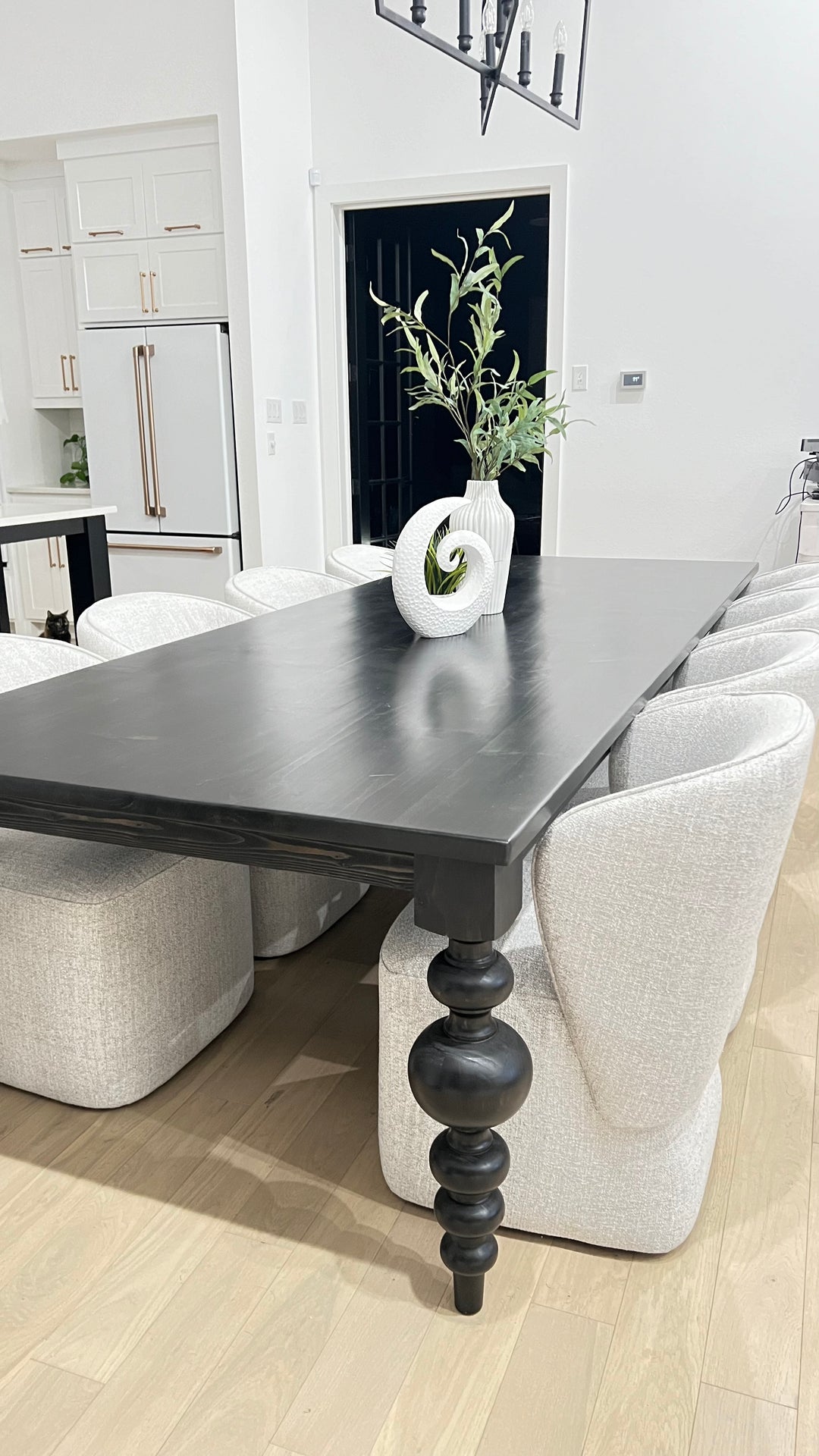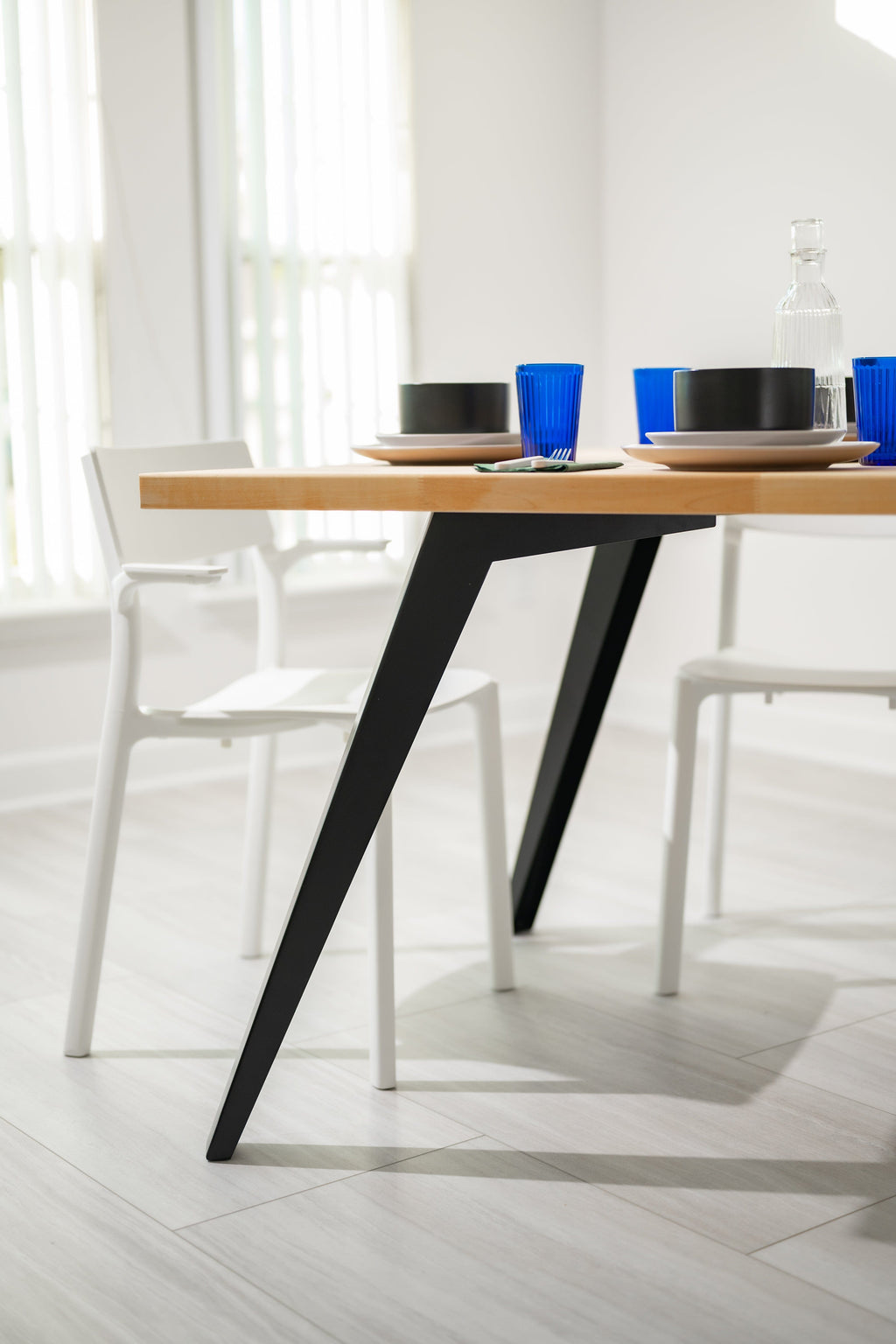Creative Ideas for Replacing or Refurbishing Your Dining Room Table Legs
Creative Ideas for Replacing or Refurbishing Your Dining Room Table Legs
Blog Article
From Conventional to Modern: Find the Perfect Dining-room Table Legs for Your Design
While traditional layouts such as cabriole and transformed legs evoke a sense of timeless class, modern styles like barrette and geometric options present a possibility for striking aesthetic rate of interest. As you take into consideration these aspects, the question continues to be: exactly how can you seamlessly integrate these varied leg styles to create an unified dining experience?
Recognizing Table Leg Styles
The variety of dining area table leg designs can significantly affect both the aesthetic appeals and functionality of the area. Each leg style adds unique visual aspects and useful features, catering to varied layout choices and usage requirements. Recognizing these designs is crucial for picking the appropriate dining table that aligns with your general interior decoration vision.
As an example, tapered legs supply a tidy, traditional look that can improve a room's beauty, while pedestal bases give security and make best use of legroom, making them ideal for smaller sized rooms. Hairpin legs, a hallmark of mid-century modern style, introduce a commercial style, enabling for a ventilated, open feel. Trestle legs stimulate rustic charm, giving robust support and a sense of timelessness.
In addition, the selection of materials plays a substantial function. Wooden legs can bring heat and texture, whereas steel options usually share a smooth, modern vibe. Inevitably, comprehending table leg styles is crucial for creating a natural dining area that mirrors personal design while ensuring functionality and comfort. By thoughtfully considering these elements, you can boost both the practical and aesthetic appeal of your dining room.
Typical Table Leg Options
When selecting dining-room table legs, standard alternatives typically symbolize classic beauty and workmanship. These designs show an abundant heritage and a dedication to top quality, making them ideal for those that value timeless aesthetic appeals.
Among one of the most iconic standard leg styles is the cabriole leg, defined by its stylish rounded shape. This design commonly includes ornamental carvings and is most typically found in Queen Anne and Chippendale furniture. Another prominent choice is the turned leg, which flaunts a collection of smooth, rounded forms that supply a traditional appearance while preserving stability.
In addition, the straight leg, while straightforward, supplies a sturdy and basic framework that can mix effortlessly with a variety of tabletop styles. For those attracted to ornate describing, claw-and-ball feet legs stimulate a sense of grandeur and can offer as a magnificent prime focus in any type of dining area.
Finally, pedestal bases, although not purely legs, supply a different traditional alternative that enables for sufficient legroom and can be wonderfully sculpted. Each of these traditional leg styles adds to the total ambiance of an eating room, weding feature with aesthetic allure.

Modern Table Leg Layouts
Modern table leg styles supply a varied variety of designs that highlight innovative products and clean lines. These styles typically focus on capability while functioning as striking prime focus within a dining area. Minimal aesthetics prevail, with legs crafted from materials such as steel, glass, and engineered timber, which add to a airy and modern feeling.
One prominent layout is the hairpin leg, defined by its slim, conical framework that provides security without overwhelming the tabletop (dining room table legs). This design is typically located in mid-century modern furniture and can easily enhance different eating table shapes. Another pattern is the usage of geometric shapes, where legs might tackle asymmetrical or angular types, including aesthetic interest and a touch of creativity

Blending Styles for Unique Spaces
Frequently, homeowners look for to create unique eating rooms that reflect their individual style by mixing different layout aspects. This method permits the incorporation of diverse appearances, causing a harmonious yet distinct atmosphere. For example, combining a rustic wooden table with streamlined, modern-day metal legs can create an attractive contrast that boosts the space's total charm.
Furthermore, incorporating vintage table legs with contemporary tabletops can evoke a feeling of history while keeping a modern perceptiveness. Such combinations not only display individual preference but likewise encourage creativity, enabling homeowners to curate an area that feels both individual and welcoming.
Color plays an essential function in this blending process; picking table legs that match or contrast with the existing shade system can improve aesthetic interest. For instance, whitewashed legs can soften the boldness of a dark table surface area, developing a balanced visual.
Tips for Selecting the Right Legs
Picking the right table legs is important for attaining both performance and visual allure in your dining space. Begin by thinking about the overall design of your area. Traditional settings gain from legs that include detailed carvings or transformed layouts, while modern spaces may call for smooth, minimal styles.
Next, evaluate the height and stability of the legs. dining room table legs. Typical dining tables vary in between 28 to 30 inches in elevation, so make certain the legs complement this measurement for comfort. Furthermore, durable products, such this page as hardwood or metal, can enhance security and durability
Examine the leg form too-- options consist of directly, tapered, or pedestal styles. Straight legs supply a timeless appearance, while conical legs can include a touch of style. Pedestal bases provide ample legroom and are perfect for smaller sized rooms.
Verdict
In summary, choosing the suitable dining-room table legs requires cautious factor to consider of both contemporary and conventional styles. Standard choices such as cabriole and turned legs offer classic style, while modern designs like hairpin and geometric forms supply a contemporary touch. By harmonizing leg style, height, and material with the overall décor, a natural and inviting environment can be accomplished. Ultimately, the chosen table legs must reflect the wanted visual, link boosting the eating experience within the space.
The range of dining area table leg styles can significantly affect both the looks and performance of the space. Inevitably, understanding table leg designs is essential for creating a natural eating location that shows personal style while ensuring usefulness and convenience.One of the most legendary typical leg designs is the Get the facts cabriole leg, defined by its stylish bent shape. Straight legs offer a classic look, while conical legs can include a touch of beauty.In summary, choosing the ideal dining area table legs requires careful consideration of both typical and modern designs.
Report this page